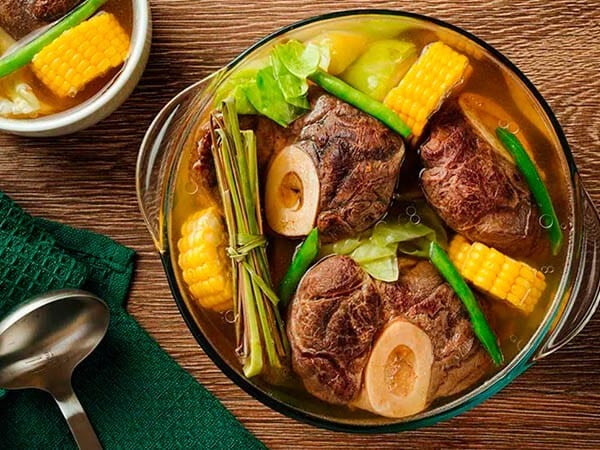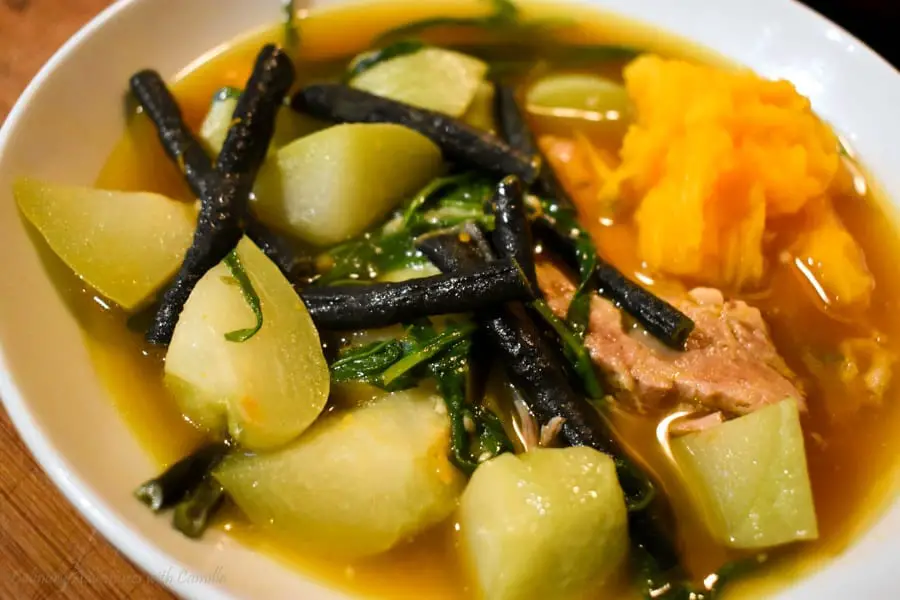Hearty Filipino Food Recipes for the Ultimate Feast.
Explore the Rich Preference of Filipino Cuisine With These Must-Try Recipes
Filipino cuisine provides an impressive tapestry of tastes that show the country's abundant social heritage. Each dish informs a story, from the mouthwatering depth of Adobo to the revitalizing tang of Sinigang, welcoming cooking lovers to check out a diverse selection of preferences. The festive appeal of Lechon and the comforting heat of Kare-Kare further enrich this gastronomic trip, while the vibrant Halo-Halo provides a pleasant conclusion to any type of dish. As we take into consideration the nuances of these iconic dishes, one have to ponder exactly how they not just satisfy the taste buds but likewise link us to a broader cultural story.
Adobo: The Iconic Dish
Adobo has actually become the essential dish of Filipino food, exciting tastes both locally and abroad. This beloved dish is identified by its one-of-a-kind combination of savory, sour, and a little sweet flavors, achieved with a careful marination process. Typically, adobo is prepared utilizing hen or pork, although variants exist that incorporate fish and shellfish and vegetables.
The basic ingredients of adobo include soy sauce, vinegar, garlic, bay leaves, and black pepper, which with each other produce a rich and fragrant sauce. The cooking technique usually entails simmering the meat in the sauce, permitting it to soak up the complex tastes while becoming tender. This procedure not only boosts the taste yet likewise functions as a natural preservative, making adobo an ideal meal for storage.
Adobo is typically served with steamed rice, which enhances its robust flavor profile. Each region in the Philippines flaunts its own version, mirroring neighborhood active ingredients and culinary customs. This versatility talks with the recipe's cultural value and sustaining popularity. Whether appreciated in your home or in dining establishments, adobo stays a staple that symbolizes the essence of Filipino hospitality, making it a must-try for any individual exploring this vibrant food.

Sinigang: A Tangy Pleasure
An additional foundation of Filipino cuisine is sinigang, a meal commemorated for its unique tasty flavor. This savory soup is commonly made with a selection of meats, including pork, beef, shrimp, or fish, and is characterized by its sour broth, which typically originates from tamarind, green mango, or calamansi. The equilibrium of level of acidity and umami creates a revitalizing contrast that is both comforting and invigorating.
Sinigang is typically enriched with a selection of fresh vegetables such as radish, eggplant, water spinach, and string beans, contributing not only to the dish's taste account yet also to its nutritional worth - Filipino food recipes. Each family might have its own variation, with local variations that reflect neighborhood active ingredients and social influences
The prep work of sinigang entails simmering the picked meat up until tender, complied with by the enhancement of the souring representative and vegetables. This approach permits the tastes to meld wonderfully, causing a passionate get redirected here and satisfying dish. Generally offered with steamed rice, sinigang symbolizes the significance of Filipino hospitality and is a cherished staple, frequently enjoyed throughout household celebrations and unique occasions.
Lechon: The Joyful Roast
Lechon, frequently considered as the focal point of festive Filipino celebrations, is a succulent baked pig recognized for its crunchy skin and tender, tasty meat. This legendary meal is deeply rooted in Filipino culture, often beautifying tables during birthday celebrations, wedding celebrations, and substantial holidays. The prep work of lechon is an art kind, calling for precise focus to information, from seasoning the pig with a mix of flavors to guaranteeing an also roast over an open flame or in a specialized stove.
Typically, the pig is experienced with a blend of salt, pepper, and neighborhood natural herbs, presenting an abundant flavor that enhances its all-natural juiciness. The cooking process can take numerous hours, during which the skin changes right into a perfectly crispy layer, creating a fascinating contrast to the succulent meat underneath.
Lechon is traditionally offered with a side of liver sauce or vinegar dip, enhancing its full-flavored account. It is not just a dish however a communal experience, as families and buddies collect around to appreciate this superb dish. The fragrance of lechon floating via the air is an invite to delight, making it a beloved icon of event in Filipino culture.
Kare-Kare: Oxtail Stew
Kare-Kare, a rich and passionate oxtail stew, holds a special location in Filipino cooking practice, commemorated for its one-of-a-kind taste profile and vivid presentation (Filipino food recipes). This recipe is defined by its lush peanut sauce, which is developed by grinding roasted peanuts or using peanut butter, giving it a velvety and nutty significance. Traditionally, kare-kare attributes tender oxtail, although variants might include Resources tripe or beef shank, each contributing to the stew's depth of taste
The prep work of kare-kare normally includes slow-cooking the meat up until it comes to be extremely tender. The enhancement of a variety of vegetables, such as eggplant, string beans, and banana hearts, not only boosts the stew's nutritional worth but also its aesthetic appeal. Served with a side of bagoong, or fermented shrimp paste, kare-kare magnificently stabilizes its abundant, tasty notes with a salted kick.
Typically appreciated throughout special occasions and family gatherings, kare-kare personifies the essence of common dining in Filipino culture. Its fascinating intricacy and calming warmth make it a dish that is not just satisfying to the taste however likewise stimulates a sense of fond memories for lots of Filipinos around the world.

Halo-Halo: A Sweet Treat
Halo-halo is usually pertained to as the quintessential Filipino treat, celebrated for its vibrant mix of appearances and tastes - Filipino food recipes. This fascinating concoction is a perfect representation of the Philippines' rich cooking heritage, integrating numerous components that come with each other to produce a revitalizing and indulgent treat, particularly during hot weather
At its core, halo-halo features smashed ice topped with an array of components, consisting of sweetened beans, jellies, fruits like bananas and jackfruit, and creamy leche flan. A charitable inside story of ube (purple yam) ice lotion crowns the mix, adding an abundant, creamy taste that raises the dessert. The layering description of components not just produces a banquet for the eyes however additionally provides a complicated interplay of sweetness and appearance in every dose.
Commonly offered in a glass, halo-halo encourages diners to blend the materials before enjoying. This public aspect improves the treat's allure, as everyone's variation can be uniquely tailored. Whether appreciated as a road food extravagance or a special occasion treat, halo-halo remains a cherished sign of Filipino society, inviting everyone to explore its fascinating and diverse flavors.
Conclusion
